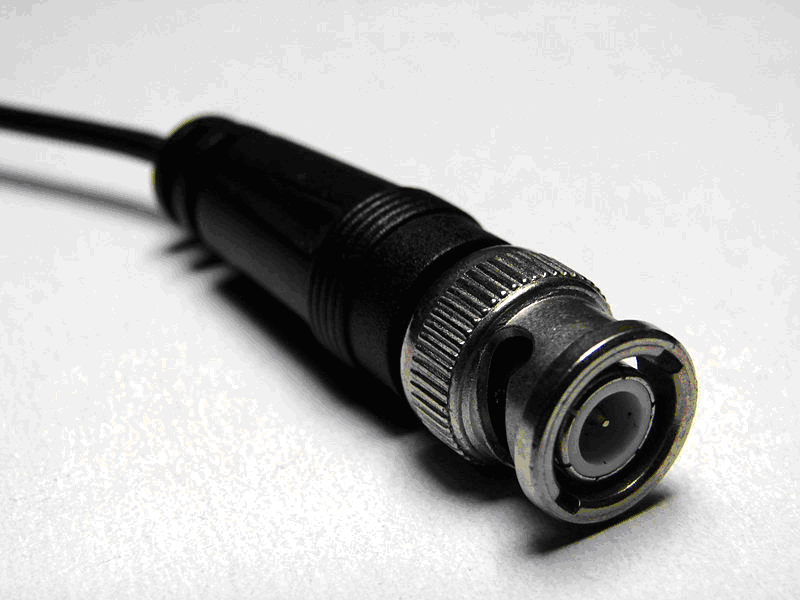Imagine situation, when client is requesting some equipment that is getting signals from video surveillance cameras and transmitting to another part of the city, using one wire in HD (720p). Or some customer wants Full HD (1080p) movie, that would be directly broad-casted in real time. Customer could even change his/her mind about the type of service. For that reason is the best to use Fiber cable that could be used in multiple different modes (Single mode, Multi-mode, etc.) together with AN-SDI. AN-SDI is Video Digital Optical Converter that is used for transmitting in SD-SDI (480i, 576i), HD-SDI (720p, 1080i) or 3G-SDI (1080p) up to 100 km between two devices.

Picture 1. SDI connector
Serial digital interface uses BNC connectors which have a nominal impedance of 75 ohms. Using the SDI standard allows to send 270 Mbit/s signal over 300 meters without repeater. For HD shorter length is allowed, typically 100 meters.
Bit rates.
For standard definition (SD) applications, as defined by SMPTE 259M, the possible bit rates are 270 Mbit/s, 360 Mbit/s, 143 Mbit/s, and 177 Mbit/s. 270 Mbit/s is by far the most commonly used; though the 360 Mbit/s interface (used for widescreen standard definition) is sometimes encountered. The 143 and 177 Mbit/s interfaces were intended for transmission of composite-encoded (NTSC or PAL) video digitally, and are now considered obsolete.
For HDTV (HD) applications, the serial digital interface is defined by SMPTE 292M. Two bit rates are defined, 1.485 Gbit/s, and 1.485/1.001 Gbit/s. The factor of 1/1.001 is provided to allow SMPTE 292M to support video formats with frame rates of 59.94 Hz, 29.97 Hz, and 23.98 Hz, in order to be compatible with existing NTSC systems. The 1.485 Gbit/s version of the standard supports other frame rates in widespread use, including 60 Hz, 50 Hz, 30 Hz, 25 Hz, and 24 Hz. It is common to collectively refer to both standards using a nominal bit rate of 1.5 Gbit/s.
A nominal 3 Gbit/s (3G) interface (more accurately, 2.97 Gbit/s, but commonly referred to as “3 gig”) is standardized by SMPTE; as of June 2006, chipsets for this interface are just becoming available. It is intended to support all of the features supported by the dual 1.485 Gbit/s interface, but requires only one cable rather than two.
You can check more about our SDI converter over fiber here: https://www.ad-net.com.tw/index.php?id=573


